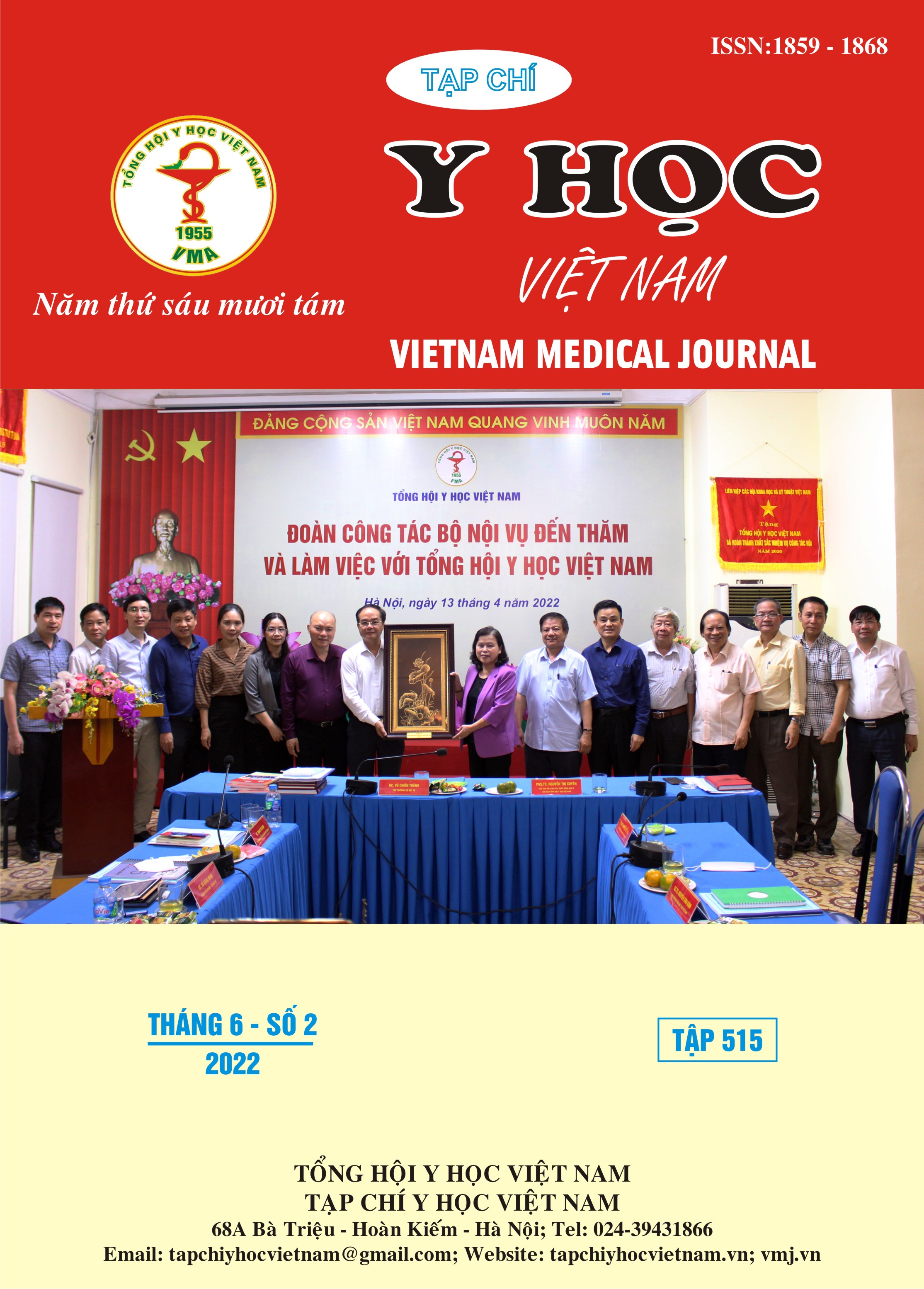CORRELATION BETWEEN SERUM NT-ProBNP AND DOPPLER ECHOCARDIOGRAPHIC PARAMETERS IN BASEDOW’S PATIENTS WITH THYROTOXICOSIS
Main Article Content
Abstract
Aims: Assessment correlate between serum NT-proBNP levels and doppler echocardiographic parameters in Basedow' patients with thyrotoxicosis. Subjects and methods: 258 Basedow' patients with thyrotoxicosis age 37,0 (27,0-52,0), female: 213 (83,6%); male 45 (17,4%). Serum NT-proBNP levels were measured by electroluminescence immunoassay (ECLIA) and doppler echocardiography performed in EPIQ 5G to determine some cardiac morphofunctional parameters. Results: NT-proBNP concentrations increased in patients with increased left atrial diameter, left ventricular end-diastolic diameter (Dd), right ventricular diameter, cardiac output (CO), ejection fraction (EF), systolic pulmonary artery pressure (sPAP), significantly related to the E/A ratio. The proportion of patients with NT-proBNP concentration in the range of 125-2000 pmol/l in subjects with increased left atrial and right ventricular diameter, CO >6 l/min, and sPAP at 41-65 mmHg was higher than in subjects who has respective indicators in normal range. Conclusion: The concentration of NT-proBNP was significantly associated with cardiac morphology and function on echocardiography in Basedow's patient with thyrotoxincosis.
Article Details
Keywords
Basedow’s disease, Hyperthyroidism, serum concentrations of NT-proBNP, echocardiography, cardiac dysfunction
References
2. Richard W. Troughton, A. Mark Richards (2009), “B-Type Natriuretic Peptides and Enchocardiographic Measures of Cardiac Structure and Function”, Cardiovascular Imaging, 2(2), pp. 216-225.
3. Keiko Kato, Hitomi Murakami, Osamu Isozaki, et al. (2009), “Serum Concentrations of BNP and ANP in patients with Thyrotoxicosis”, Endocrine Journal, 56(1), pp. 17-27.
4. Masakazu Kohno, Takeshi Horia, Kenichi Yasunari et al. (1993), “Stimulation of Brain Natriuretic Peptide Release from the Heart by Thyroid Hormone”, Matabolism, 42(8), pp. 1059-1064.
5. A. Aujayeb, J. Dundas (2021), “Heart failure from Thyrotoxicosis due to Graves’ disease”, Acute Medicine, 20(1), pp. 68-73.
6. Ahmed Fallah Allawi, Ferial A. Al-Mahdawi, Abdul-Karim Y. Al-Samerraie (2014), “Study the Effect of Hyperthyroidism on Heart Function by Using BNP as Indicator”, Iraqi Journal of Science, 55(4A), pp. 1541-1546.
7. Cameli C. Sacrneciu, Livia Sangeorzan, Mihaela Popescu et al, (2018), “The Relation of Dependency and the Predictive Potential of Sevaral Factors Possibly Involved in Determining Pulmonary Hypertension in Graves’ Disease”, Pak J Med Sci, 34(3), pp. 583-589.
8. Furquan Mohd Akram Khan, Anannya Mukherji, Shekhar T. Nabar (2016), “Graves’ disease presenting as right heart failure with severe pulmonary ypertension”, Int J Res Med Sci, 4(8), pp. 3636-3639.


